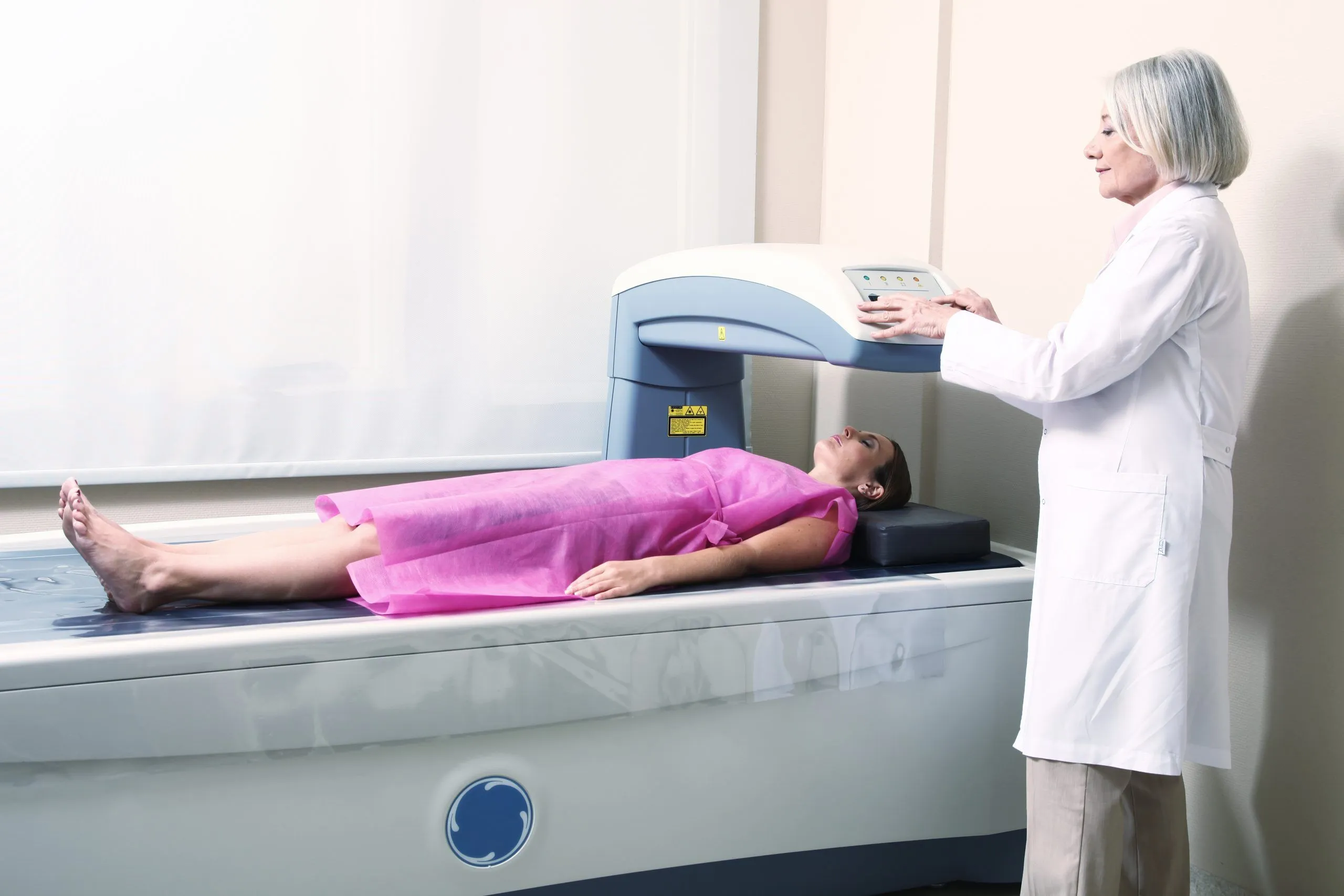Quick Appointment Form

Bone Density Measurement (DEXA)
Bone Density (Bone Densitometry) (DEXA)
Bone density measurement is a non-invasive imaging method that measures the calcium and other minerals in bone tissue using low-dose X-rays. Also known as DEXA, this imaging technique typically evaluates the spine, hip, and sometimes the forearm.
The higher the bone mineral density, the stronger the bones and the lower the risk of fractures.
Although osteoporosis is commonly known as a condition affecting older women, it can also occur in men. Since osteoporosis does not cause any symptoms until a fracture occurs, early diagnosis and treatment are crucial. Regardless of gender and age, your doctor may recommend this test.
Why is it needed?
- As a screening test before fractures occur.
- To assess the risk of bone fractures after age 50 (post-menopause).
- For diagnosing osteoporosis.
- To monitor treatment response in patients diagnosed with osteoporosis.
- To detect spinal compression fractures caused by osteoporosis in individuals whose height has decreased by approximately 4 cm.
- To identify increased risks associated with the long-term use of certain medications, such as steroids, or tobacco products.